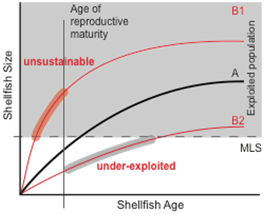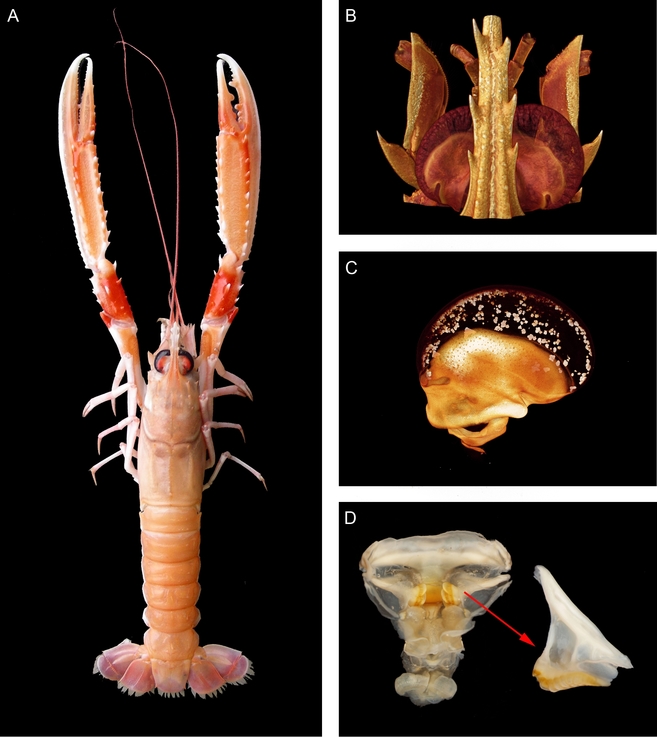Age Determination in Crustaceans
Enhancing the sustainability and market share of crustacean fisheries through advances in determination of age/size relationships
This project funded by Seafish and Kilkeel Seafoods investigated the age determination of commercially exploited crustaceans in UK waters. Our goal is to establish better-informed relationships between age, size and reproductive stages of specimens from different geographic regions to increase the sustainability and market share of crustacean fisheries in the UK. Figure 1 shows the effect of different growth rates in populations on the sustainability of fisheries.

Fig. 1 Size, age, maturity and reproduction:
using a minimum landing size (MLS) determined from Population A, the exploited fraction of the population is in the shaded region. Shifts in size-at-age patterns (Populations B1 vs. B2; reproductive period shaded around lines) cause dramatically differing consequences for sustainable harvest.
We are expanding on a novel approach in crustacean age determination using growth marks discovered in the cuticle of eyestalks and gastric mills of Norway Lobster (Nephrops norvegicus), Brown Crab (Cancer pagurus), Velvet Crab (Necora puber) and European Lobster (Homarus gammarus). We are exploring different morphological methods to study growth bands, using different techniques to take sections from 0.1 mm to 1,5 mm thick and 3D scanning with micro-computertomography. Figure 2 shows the cuticle structures used for age determination, which are supposed to have the endocuticle retained through moulting and therefore reflect chronological age.

Fig. 2 Growth band bearing cuticle structures in Nephrops norvegicus. A Male N. norvegicus from the Irish Sea. B Volume rendering of micro-computertomographic scan of head in dorsal view. C Volume rendering of single eyestalk with strongly calcified areas basally. D Zygocardiac ossicle (right) isolated from dissected gastric mill (left).

